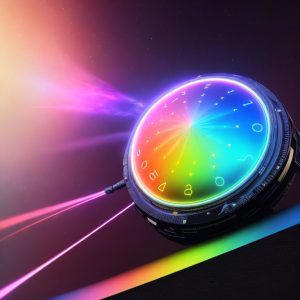With the VCV Rack it is possible to make two different oscillations (tones) visible with a Lissajous Oscilloscope. We experimented with it yesterday and set C as the first tone, this gives a simple wave pattern, a sine. We wanted to know how tones show up with each other when played together. We started with the well-known intervals fourth and fifth.
Fourth with F
We have visualized what pattern the two frequencies C and F produce:



Unfortunately, I could not record this as a movie, but that will come. What you can see on the pictures is the pattern that the wave C delivers well-tempered (493.91 Hz) together with F as a pure fourth (348.84 Hz, not well-tempered 349.28 Hz). The closer one regulates to the ‚pure‘ value of F, the quieter the image becomes. The images are snapshots of a very slowly rotating object when the frequency is changed minimally. A real challenge for the spatial imagination.
Fifth with G
Here, the near standstill occurred at the frequency 392.45 Hz for G. Well-tempered, G corresponds to 392.00 Hz.



Other intervals
With all the other intervals, i.e. pitches that we mapped together with C, similar patterns emerged that became more complex the more disharmonious the interval sounded.



Our results of the ‚rest frequencies‘, i.e. the frequencies at which the two waves no longer show any motion but provide a static image, were:
| C | 493,91 Hz (well-tempered) |
| C# | 277,02 Hz |
| D | 294,33 Hz |
| D# | 311,46 Hz |
| E | 329,88 Hz |
| F | 348,84 Hz |
| F# | 370,64 Hz |
| G | 392,45 Hz |
| G# | 414,26 Hz |
| A | 441,51 Hz |
| A# | 465,13 Hz |
| H | 494,21 Hz |
Translated with www.DeepL.com/Translator (free version)



